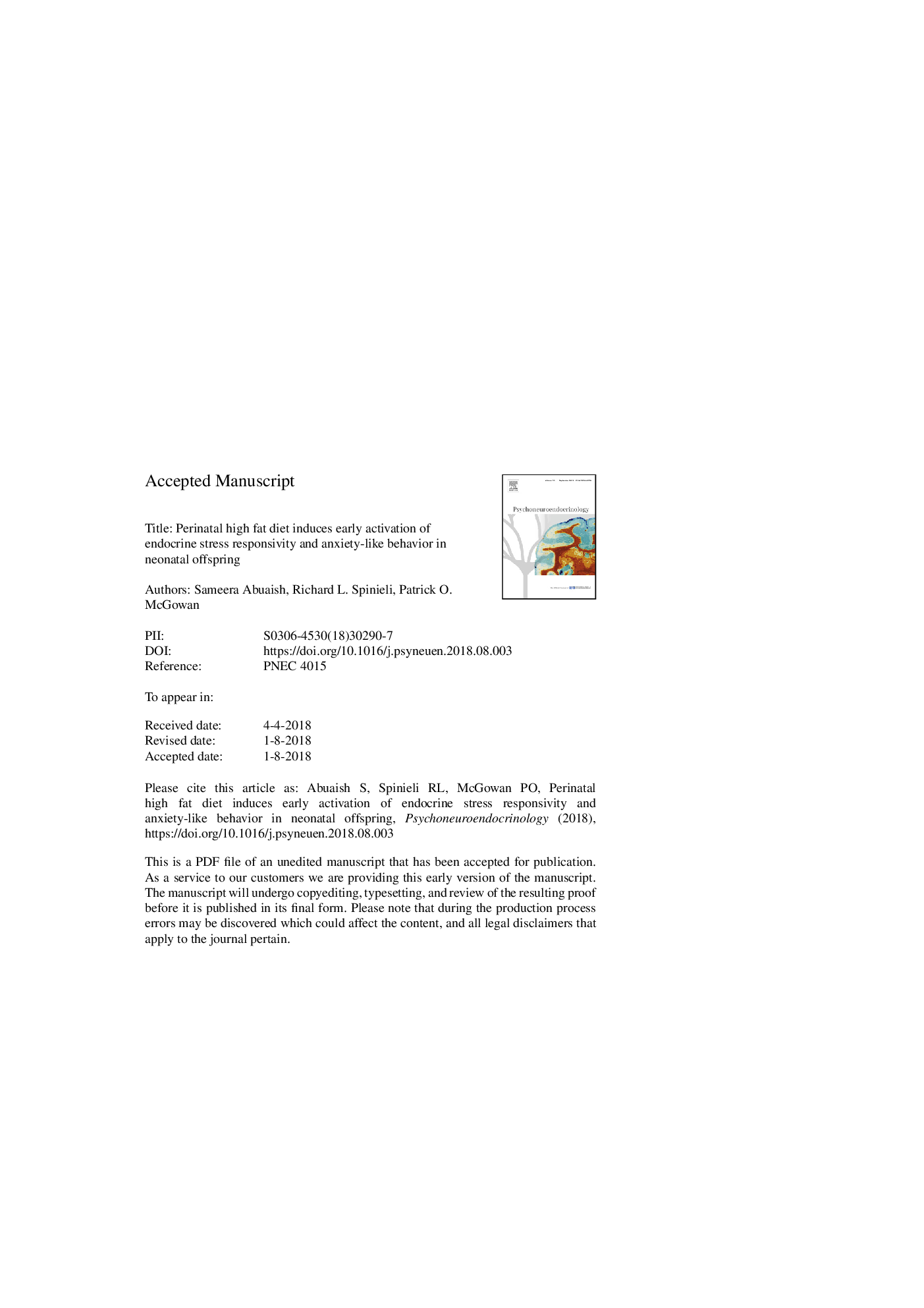| کد مقاله | کد نشریه | سال انتشار | مقاله انگلیسی | نسخه تمام متن |
|---|---|---|---|---|
| 6817428 | 1433945 | 2018 | 37 صفحه PDF | دانلود رایگان |
عنوان انگلیسی مقاله ISI
Perinatal high fat diet induces early activation of endocrine stress responsivity and anxiety-like behavior in neonates
ترجمه فارسی عنوان
رژیم غذایی پریناتال با افزایش چربی بدن باعث فعال شدن زودرس پاسخ های استرس غدد درون ریز و رفتار اضطرابی در نوزادان می شود
دانلود مقاله + سفارش ترجمه
دانلود مقاله ISI انگلیسی
رایگان برای ایرانیان
کلمات کلیدی
موضوعات مرتبط
علوم زیستی و بیوفناوری
بیوشیمی، ژنتیک و زیست شناسی مولکولی
علوم غدد
چکیده انگلیسی
The maternal environment has a profound effect on the development of offspring, including responses to stress mediated by the hypothalamic-pituitary-adrenal (HPA) axis. In rodents, perinatal high fat diet (HFD) has been shown to program the HPA axis in a manner that persists throughout adulthood, however the effects of perinatal HFD on stress-related behaviors and physiology in neonates are limited. The first two weeks of life in rodents are known as the stress hyporesponsive period, during which animals do not respond to stressors that are otherwise known to elicit behavioral and physiological responses in mature animals. As neonates emerge from the hyporesponsive period, the maturing neural systems mediating the HPA axis leads to the suppression of ultrasonic vocalizations (USVs) and movement in the presence of threatening stimuli, such as male adult rat odor. In this study, we investigated the effects of perinatal HFD exposure, spanning the maternal pregestation, gestation and lactation period, on stress-related behaviors and physiology in neonatal rat offspring throughout the stress hyporesponsive period. During the stress hyporesponsive period, postnatal day (PND) 7, HFD pups had higher corticosterone levels in response to the presence of male odor, produced fewer USVs, and had an increase in basal corticotropin releasing hormone (Crh) transcript levels in the paraventricular nucleus of the hypothalamus. As pup emerged from the stress hyporesponsive period, PND 13, HFD offspring exhibited higher adrenocorticotropic hormone (ACTH) levels in response to male odor, increased anxiety-like behaviors as shown by increased USVs and immobility, and lower glucocorticoid receptor (Nr3c1) transcript abundance in the ventral hippocampus. These results indicate an alteration in the typical physiological and behavioral responses to stress during the hyporesponsive period of the HPA axis as a function of perinatal HFD exposure, which involves changes in the regulation of key genes mediating the HPA axis.
ناشر
Database: Elsevier - ScienceDirect (ساینس دایرکت)
Journal: Psychoneuroendocrinology - Volume 98, December 2018, Pages 11-21
Journal: Psychoneuroendocrinology - Volume 98, December 2018, Pages 11-21
نویسندگان
Sameera Abuaish, Richard L. Spinieli, Patrick O. McGowan,
